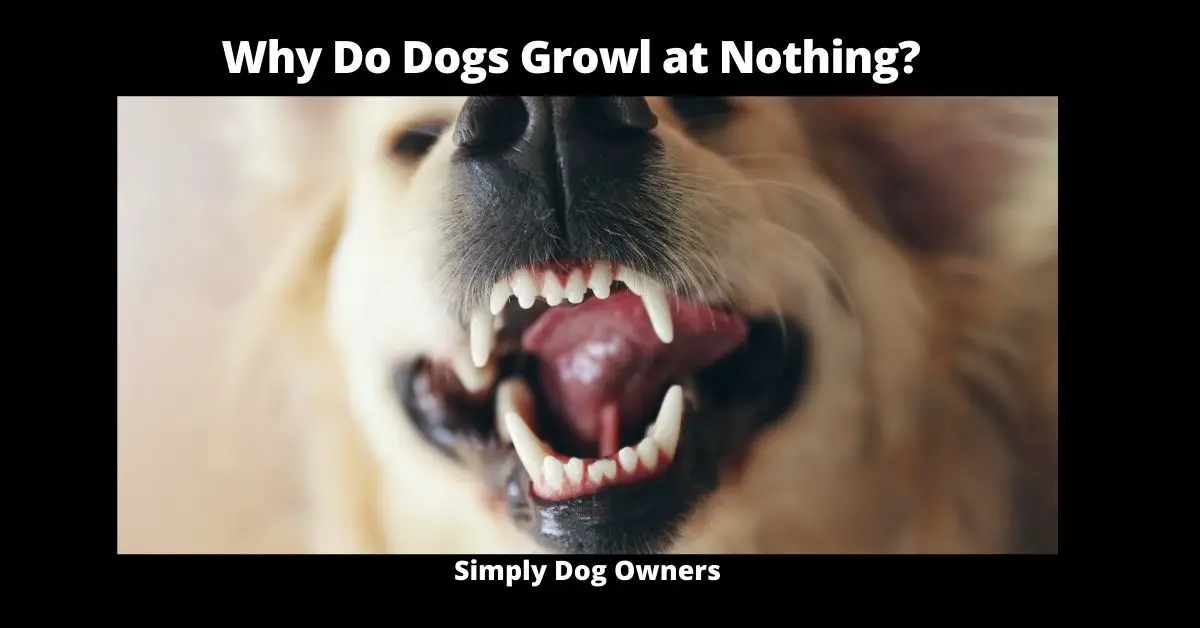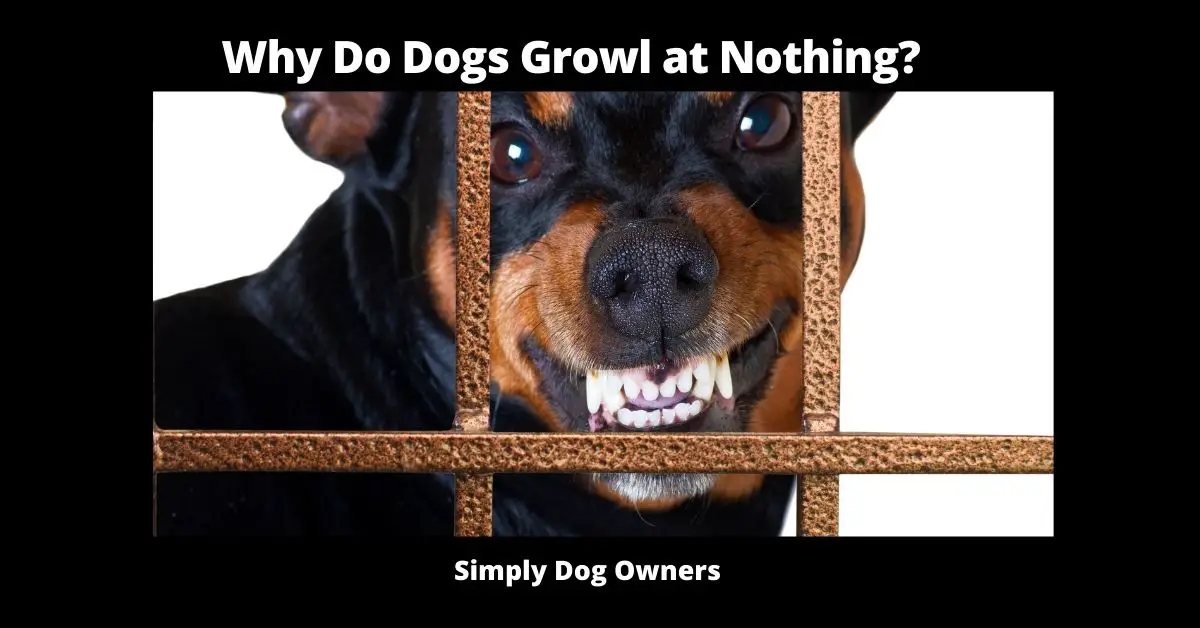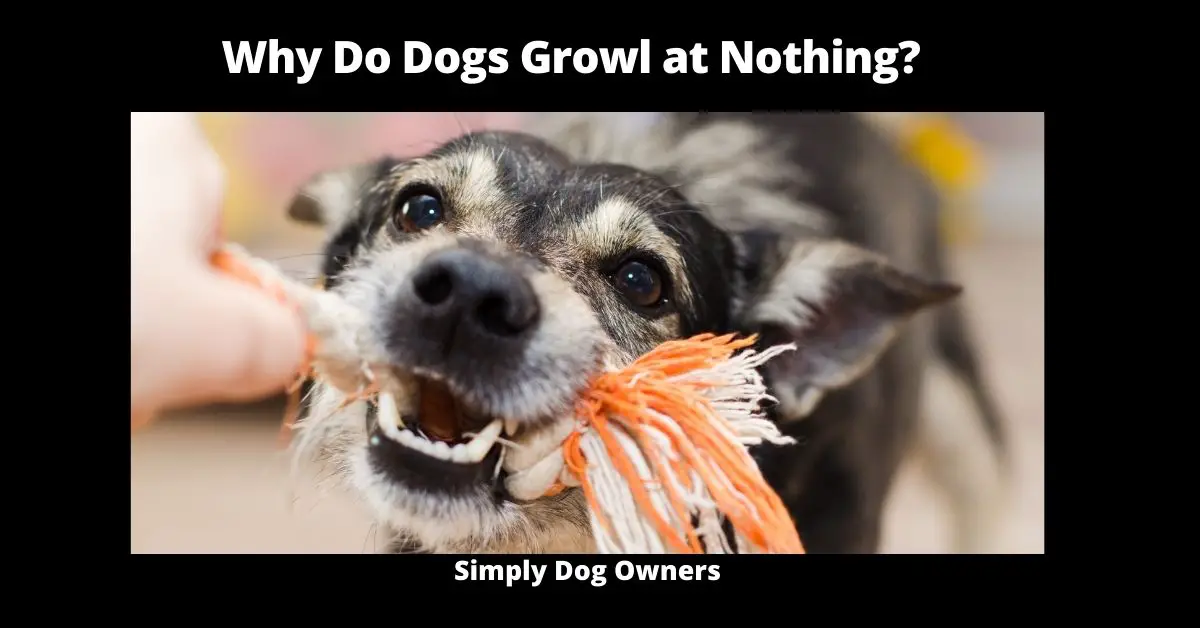Dogs growl many times at things we are not aware of because their senses are more acute than ours. Threats, Danger, being protective and territorial area few
Why Do Dogs Growl at Nothing?
If you’ve ever been around a dog when it’s growling, you may have wondered what the heck it was doing. Why does a dog growl at nothing? It seems like strange behavior, but there is actually a good reason for it! In this blog post, we will discuss the reasons dogs growl and what it means when they do. We will also provide some tips on how to handle a dog that is growling for no apparent reason. Why Do Dogs Growl at Nothing?
What are the Reasons Dogs Growl?
Some of the reasons that dogs growl include:
- Threats by other animals or people. If a dog feels threatened, it can become defensive and may bite. A dog that has been abused in the past may be very fearful of new situations and could show aggression when faced with them for the first time. Dogs that have not been properly socialized as puppies are more likely to growl at strangers or unfamiliar objects than those who were exposed to different situations as pups.
- Pain/illness/discomfort – An ill or injured dog that is approached will often growl at the person approaching him because he does not feel well enough to get away from you and doesn’t want you touching his sore area! The same goes for older dogs – they may start growling if they are no longer able to move as quickly as they once did.
- Fear – Dogs will often growl when afraid, especially if there is something in their environment that they perceive as a threat (a person or another animal).
- Playing – Some dogs growl when they play because it’s fun! This can be a normal part of playing tug-of-war or fetch with your furry friend.
- Resource guarding – If you reach for your dog’s favorite toy, he might begin to growl in order to let you know that this is his property and should not be taken away from him. In other words, he wants what he wants now!
- Redirected aggression – The dog may have been provoked by something else (such as another animal) but due to its inability
- to do anything about it will redirect the aggression onto an innocent bystander instead. Dogs often display redirected aggression when they are confined within crates/cages or left alone for long periods of time with no outlet for their emotions.
- Predatory chasing – This happens when the dog sees something moving (such as a rabbit or squirrel) and wants to chase after it; however, there is usually nothing wrong with this behavior unless you see that your pet starts growling at people too often! In some cases, these animals just need more exercise so try taking them out on walks or playing fetch before bedtime each night – this should help alleviate any pent-up energy which could lead to unwanted behaviors like biting/growling during playtime.
- Pain from an injury – If your dog has been injured, he may display signs of aggression such as barking and growling at other dogs while they are recovering from surgery. This is usually a temporary phase that should go away once the dog feels better.

How strong are Dogs Senses/ Compared to Humans?
In comparing a dog’s senses to a person, we can see that the dog’s senses are more acute.
Dogs 5 Senses
The first thing you should understand is what exactly these five senses refer to in humans and dogs. The five senses, which include sight, hearing, touch, taste, and smell collectively allow us to gather information from our environment and process it appropriately based on its importance within the moment. Your brain then uses this information for your survival as well as memory retention. Although some people believe there are more than just five basic human senses the most common ones are the ones above mentioned. Dogs possess all of these same human-like senses with some minor differences or variations when comparing them side by side with us humans. It’s not to say that a person’s five senses are useless compared to dogs because we have our own strengths and weaknesses. We just need to understand the way in which these senses work for each species and how they use them.
Sight – Sense of the Eyes
The first of the five basic human senses is sight or vision. Our eyes allow us to see things around us with varying degrees of color, brightness, clarity, and size. A dog’s eyesight works much like ours although they can only see black, white, and shades of gray as opposed to humans who can perceive many more colors than this limited spectrum allows for. Because their eye structure doesn’t contain certain cones within its retina it causes them an inability to distinguish certain colors from other ones such as purple from blue or red from orange. Most dogs can see better at night and in dimly lit areas than humans can because of their light-adjusting pupil which allows them to take in more light during those times. Dogs are also less likely to experience color blindness issues that some humans may suffer with. Although they have a greater ability to perceive movement (even the slightest) and motion than people, they have poorer visual acuity due to being nearsighted compared to most people who are farsighted.
Hearing – Sense of the Ears
The second human sense is hearing – this refers to your ears’ ability to allow you to hear sounds around by perceiving vibrations through sound waves traveling through the air. A dog’s inner ear structures contain more hair cells than a human do and they are able to hear higher-pitched frequencies than we can. Dogs also have the ability to sense where a sound is coming from by using something called bone conduction which helps them pinpoint the location of a noise. This is due to their head shape as well as the fact that their ear canal goes all the way down to their jawbone. Because of this, dogs can pick up on sounds much more distinctly than humans can and they can hear things at much greater distances too.
Smell – Sense of the Nose
The third sense would be smell or olfaction – this one pertains mostly to your nose’s ability to detect different smells in your environment. Our noses are capable of detecting over ten thousand different scents and for dogs, this number is around one hundred thousand! It’s because a dog’s nose contains many more receptors than ours do which in turn allows them to pick up on scents with much greater clarity and detail than we are ever capable of.
Taste – Sense of the Tongue/Mouth
The fourth basic human sense would be taste – your tongue is what gives you the ability to detect different flavors or tastes when eating or drinking something. Dogs have fewer taste buds than us but they also use their mouths for things other than just tasting food like picking things up with it as well as communicating their needs through barking, growling and whining noises.

Touch – Sense of the Skin
The fifth and final sense in humans is touch/pressure – this refers to our skin’s ability to feel certain sensations like pain pleasure and anything in between. Dogs also have this sense but they are much more sensitive to it due to having many more nerve receptors than us which makes them much more aware of their surroundings than we tend to be at times.
Final Thoughts – Why Do Dogs Growl at Nothing?
In summary, dogs rely heavily on their senses to navigate and survive in the world around them. They use them more than we do primarily because they have to as they don’t have the same level of intelligence that humans do when it comes to understanding their surroundings. This is why it’s so important for us to understand how these senses work for dogs and how they can be used to our advantage in training them or just interacting with them on a daily basis.
